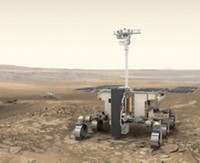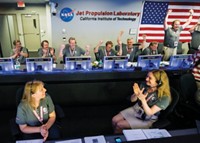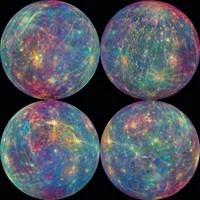Advertisement
Grab your lab coat. Let's get started
Welcome!
Welcome!
Create an account below to get 6 C&EN articles per month, receive newsletters and more - all free.
It seems this is your first time logging in online. Please enter the following information to continue.
As an ACS member you automatically get access to this site. All we need is few more details to create your reading experience.
Not you? Sign in with a different account.
Not you? Sign in with a different account.
ERROR 1
ERROR 1
ERROR 2
ERROR 2
ERROR 2
ERROR 2
ERROR 2
Password and Confirm password must match.
If you have an ACS member number, please enter it here so we can link this account to your membership. (optional)
ERROR 2
ACS values your privacy. By submitting your information, you are gaining access to C&EN and subscribing to our weekly newsletter. We use the information you provide to make your reading experience better, and we will never sell your data to third party members.
Physical Chemistry
NASA Launches Mercury Probe
Spacecraft begins seven-year trip to planet closest to the sun
by Susan R. Morrissey
August 2, 2004
| A version of this story appeared in
Volume 82, Issue 31

NASA is scheduled to launch its first mission to Mercury in nearly 30 years this week. The Mercury Surface Space Environment, Geochemistry & Ranging —or Messenger — spacecraft will begin its voyage on Aug. 2, barring any last-minute delays.
Messenger will travel almost 5 billion miles, making one flyby of Earth, two flybys of Venus, and three passes around Mercury before settling into the small planet's orbit in 2011. The spacecraft will then spend a year studying Mercury's planetary structure and composition, including whether the planet has ice in its polar craters. The mission will also study the planet's atmosphere and magnetosphere.
"For nearly 30 years, we've had questions that couldn't be answered until technology and mission designs caught up with our desire to go back to Mercury," says Sean C. Solomon, mission principal investigator and director of the Department of Terrestrial Magnetism at Carnegie Institution of Washington, D.C. "Now we are ready. The answers to these questions will not only tell us more about Mercury but illuminate processes that affect all the terrestrial planets," he explains.
The 1.2-ton Messenger will use seven different scientific instruments and a radio science experiment, which uses Doppler tracking to study the planet's mass distribution. The instruments include two cameras and a laser altimeter to study the planet's surface and a particle and plasma spectrometer and magnetometer to study the planet's magnetosphere.
The spacecraft will also be carrying an X-ray spectrometer, a gamma-ray and neutron spectrometer, and an atmospheric and surface composition spectrometer to study the elemental makeup of Mercury's rocks and minerals.
Messenger is the latest mission in NASA's Discovery program and has a price tag of $426 million.







Join the conversation
Contact the reporter
Submit a Letter to the Editor for publication
Engage with us on Twitter